Enhancing Metal Cabinets with Contact Paper: A Guide
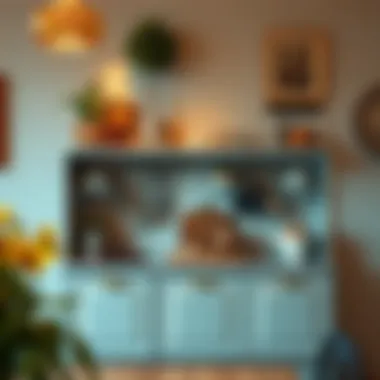

Intro
When it comes to home decor, functionality often walks hand-in-hand with beauty. Metal cabinets, with their rugged allure and industrial charm, serve their purpose well in kitchens, garages, and workshops. However, their initial appearance can sometimes lack the flair that many homeowners desire. This is where contact paper steps in, transforming these utilitarian pieces into stunning focal points.
Using contact paper on metal cabinets offers a practical yet creative solution, providing both aesthetic appeal and a protective layer. In this guide, we’ll explore the ins and outs of applying contact paper to metal cabinets: the advantages and drawbacks, various types available, and the techniques for achieving a professional-looking finish.
In a space where style meets durability, it’s essential to understand how to make the most of your materials. Let’s delve into current trends in furniture design that can influence how you approach your metal cabinets.
Furniture Design Trends
Trending Materials and Textures
In the world of design, the focus is not just on the visual but also on the tactile experience. The trend currently sees a blend of materials, where metal pairs magnificently with soft textures and natural finishes. For metal cabinets, incorporating contact paper that mimics wood grain or sisal can generate warmth, contrasting the coldness often associated with metal surfaces.
Here are some popular choices:
- Wood Grain: Achieving a rustic feel without the hefty price tag.
- Marble Effect: True opulence that creates an air of sophistication.
- Bold Patterns: If you’re feeling adventurous, patterns like geometric shapes can add character with a contemporary edge.
Color Palettes and Styles
Color is a powerful element in design, influencing mood and perceptions. When it comes to metal cabinets, think about how the hues will integrate with the overall palette of your room. Consider the following:
- Soft Pastels: A delicate touch that embraces minimalism and serenity.
- Deep Hues: Colors like navy or forest green can provide a dramatic flair that balances the sleek nature of metal.
- Neutrals with a Twist: Think greys and whites but with unique textures or finishes.
Ultimately, the choice of post-contact paper application plays a crucial role in defining your space. Briefly assessing your metal cabinets through the lens of design trends can elevate your entire home environment, making it more inviting and engaging.
Practical Tips for Furniture Selection
Assessing Space and Functionality
Before you dive into covering your metal cabinets, it’s vital to assess their surroundings. What is the overall function of the space? Are these cabinets storing tools, kitchen items, or perhaps serving as a display for decor? Knowing the function can inform your choice of contact paper not just in design, but also in durability. Consider these points:
- Durability Needs: In a kitchen, resistant paper to heat and moisture is essential.
- Ease of Cleaning: Some finishes will require more maintenance than others. Opt for materials that can handle everyday wear and tear.
Balancing Aesthetics with Comfort
On the surface, it might seem that aesthetics and comfort don't have much in common. However, balanced choices lead to cohesive spaces. While you want your cabinets to stand out, they should also feel at home in their environment. Here’s how:
- Choose Harmonious Colors: Ensure your cabinet color complements the surrounding decor, creating an inviting space.
- Select Textures Wisely: Soft textures offer comfort, while smoother finishes might evoke a modern feeling.
"The beauty of design lies in the balance; achieving this can turn mere storage into a work of art."
As we continue, we’ll delve deeper into the practical aspects of applying contact paper—essentially turning these metal cabinets into a stunning expression of personal style while keeping functionality in mind.
Prelims to Contact Paper
When it comes to home decor, particularly in enhancing the functionality and appearance of metal cabinets, contact paper emerges as an unsung hero. This versatile adhesive decorative film serves as a convenient solution for homeowners and interior designers alike. Integrating contact paper into metal cabinet design can dramatically transform a space, allowing for both elegance and personal style.
Contact paper is a practical material that combines ease of installation with myriad design options. By using this product, individuals can achieve a fresh look for their cabinets without breaking the bank. Whether you're sprucing up an old kitchen, a laundry room, or even a garage, understanding what contact paper is and how it can be applied to metal surfaces is crucial for making informed design choices.
Definition and Purpose
To put it quite plainly, contact paper is a self-adhesive film that comes in a variety of colors, textures, and patterns. It can be applied directly to surfaces, including metal cabinets, to create a new, aesthetic appeal without the need for costly renovations or professional help. The core purpose of contact paper lies in its ability to protect surfaces while also providing a decorative element. For instance, a simple white marble print can turn a plain metal cabinet into a stunning focal point of a room.
Moreover, the application of contact paper helps in protecting the underlying metal from scratches and moisture, extending the cabinet's life and maintaining its look. It's a straightforward way to achieve a customized look without the hassle of paint or other more permanent solutions. The versatility of contact paper means it can cater to various design tastes, whether one prefers bold patterns or subtle, muted colors.
Historical Context of Contact Paper
The journey of contact paper dates back to the 20th century, emerging from advancements in adhesive technology. Initially used primarily in kitchens and craft projects, it has spawned a plethora of innovative applications. What started as a utility product has evolved into a staple for DIY enthusiasts and decorators eager to add flair without full renovation.
In the past, contact paper's functionality was limited to the kitchen drawers and simple projects, often overlooked in broader home design trends. Yet, as homeowners began to embrace DIY culture, the material gained newfound prominence. Designers started experimenting with contact paper in unique ways, realizing its potential to enhance spaces creatively and practically.
Today, it’s not uncommon to find stylish metallics and textured finishes that rival other more traditional materials. Its ability to adapt to the changing trends of home decor reflects society's increasing desire for personalization and cost-effective aesthetics. With the growing awareness of sustainable practices and easy upgrades, contact paper is steadily establishing itself as a go-to solution for modern interiors.
Applications in Home Decor
When it comes to enhancing the look of your space, applications in home decor cannot be overlooked. One of the often underestimated tools for achieving stylish aesthetics is contact paper. This versatile material isn’t just for covering books or lining drawers; it can completely transform metal cabinets into stunning focal points. Understanding its applications in home decor not only elevates aesthetics but also provides practical advantages that keep your settings fresh and inviting.
Enhancing Metal Cabinets
Metal cabinets—often utilitarian and lacking charm—can be easily spruced up with the right contact paper. By applying vibrant colors, intriguing textures, or even intricate patterns, you can breathe new life into old fixtures. Imagine a once-stark metal cabinet draped in a warm wood grain finish or a striking geometric design that draws the eye. The application of contact paper is a simple yet effective means of personalization, allowing homeowners to match their cabinets with existing decor or make bold statements.
Beyond aesthetics, contact paper on metal cabinets offers a protective layer that shields against scratches and stains. This could be particularly valuable in high-traffic areas such as kitchens or home offices, where wear and tear is commonplace.
Choosing the right design can also reflect personal style. Suppose a rustic vibe invites you—opting for a wood grain design can foster warmth and comfort in the room. Alternatively, a metallic finish can impart a modern, sleek look, perfect for contemporary spaces. Whatever the choice may be, contact paper presents an excellent opportunity to showcase creativity without breaking the bank. Here’s a quick list of benefits:
- Affordability: A cost-effective way to refresh existing furniture.
- Versatility: Can be applied to various surfaces, not just metal.
- Ease of Installation: A straightforward process that requires minimal tools.
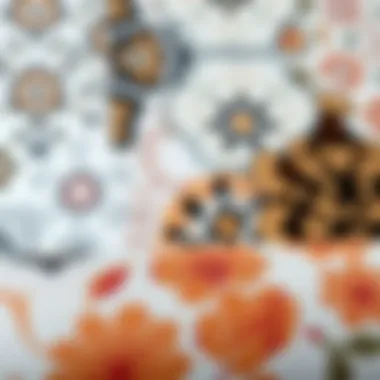
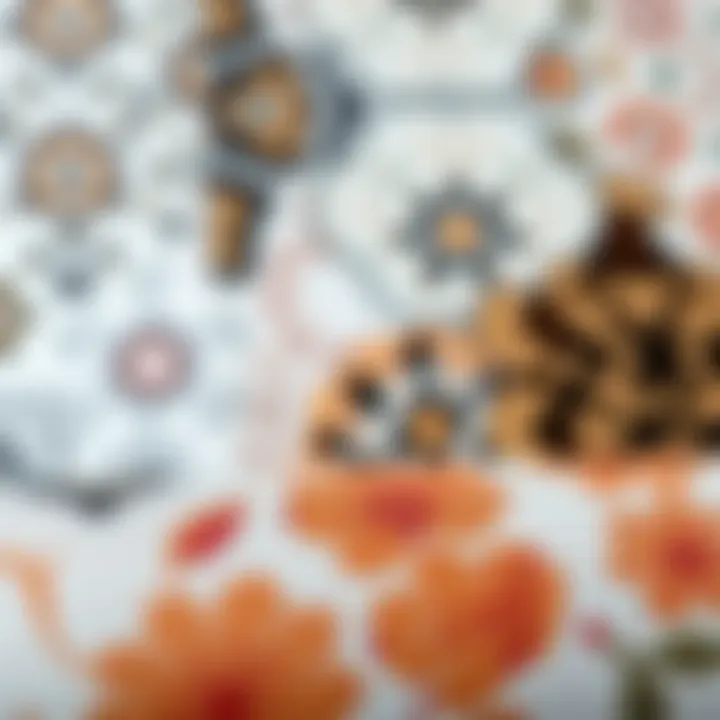
Suitability for Various Environments
The true beauty of contact paper lies in its adaptability to diverse environments. Metal cabinets located in kitchens, bathrooms, garages, or even home offices can benefit from this upgrade in a multitude of ways, tailored to specific needs and styles.
In a kitchen setting, bright and lively patterns may uplift the ambiance, making cooking more enjoyable. For a more relaxed vibe, softer hues or subtle textures might be more appropriate. In bathrooms, moisture-resistant varieties of contact paper can enhance cabinets while resisting the humidity effects.
Garages, often overlooked in terms of design, can also stand to gain from an infusion of personality. A rugged, industrial look could be achieved with a contact paper that mimics weathered metal or concrete, aligning the cabinets with the overall garage aesthetic.
When selecting contact paper, consider the following points:
- Durability: Choose options that withstand the specific conditions of the area – kitchens may require more resilient papers compared to a rarely-used guest bathroom.
- Cleaning: Select varieties that are easy to clean, particularly for areas prone to spills.
- Theme Compatibility: Ensure the design matches your overall decor theme for a cohesive look.
"A small change can make a big impact; sometimes, it’s the tiniest details that elevate an entire space."
Types of Contact Paper
Understanding the variety of contact paper types available is essential for any DIY enthusiast or homeowner looking to revamp their metal cabinets. Each type brings its own unique features and advantages, catering to different aesthetic preferences and practical needs. Choosing the right contact paper can mean the difference between a successful project and a disappointing finish. In this section, we’ll explore the most popular types of contact paper and help you determine which one is best suited for your project.
Vinyl Contact Paper
Vinyl contact paper is perhaps the most widely recognized type of contact paper. This material is known for its durability and versatility, making it an ideal choice for metal cabinets. One of the standout features of vinyl is its water resistance, which makes it easy to clean and maintain. With a range of designs and colors, it can mimic the appearance of wood, stone, or even solid colors, suiting various styles and preferences.
When it comes to application, vinyl contact paper is relatively straightforward. It generally requires minimal preparation and can be easily repositioned during installation, allowing for some margin of error. Additionally, because of its flexibility, vinyl can conform well to the contours of most surfaces, ensuring a smooth finish.
Specialty Finishes
Wood Grain
Wood grain contact paper offers a warm and natural look, closely resembling the appearance of real wood. This type is highly sought after for those looking to infuse a rustic or cozy vibe in their space. What makes wood grain special is its ability to add depth and texture without needing the expense and upkeep of actual wood.
The unique feature of wood grain paper is its realistic patterns, which often come in various shades from light pine to dark oak. However, it's important to note that while it excels in aesthetic appeal, it may not be as durable as other finishes. This makes it more suited for areas that won’t see heavy wear and tear, allowing you to enjoy its beauty without worrying about significant damage.
Metallics
Metallic contact paper can add a striking, modern touch to any metal cabinet. With its shiny finish, it can reflect light beautifully, enhancing the overall brightness of a room. Often available in shades like gold, silver, and rose gold, metallics are a great choice for creating a sense of luxury or a unique statement piece.
A key characteristic of metallic paper is its ability to make even the most basic cabinets feel high-end. However, it’s important to consider that, while stunning at first, metallic surfaces can show fingerprints and smudges more easily than matte options, requiring more frequent cleaning.
Textured Options
For a more tactile experience, textured contact paper is an excellent choice. This type typically emulates finishes such as linen, canvas, or even leather. The textured surface can add visual interest while bringing a different feel to the decor. People often gravitate towards textured options when they are aiming for a more bespoke or eclectic look in their cabinets.
The unique feature of textured contact paper lies in its ability to hide imperfections on the underlying surface, making it a smart choice for older cabinets that might have some wear. However, the added texture may make it slightly more challenging to clean than its smoother counterparts, so weighing the pros and cons is crucial in your decision-making process.
"Choosing the right type of contact paper is like finding the right frame for a piece of art; it needs to complement and enhance, not overshadow."
Advantages of Using Contact Paper
When it comes to renovating or refreshing metal cabinets in your home, utilizing contact paper brings with it a treasure trove of benefits. Not only does it enhance the aesthetics of your cabinets, but it also offers practical advantages that make it a wise choice for homeowners, designers, and decorators alike. In this section, we will explore the standout features of contact paper that set it apart as an exceptional option for cabinet transformations.
Cost-Effective Solution
One of the chief merits of contact paper is its affordability. Plastic or wood, whether your cabinets are made of metal or another material, sprucing them up can often cost a pretty penny. However, contact paper provides a budget-friendly alternative to costly renovations. Think about it: for a fraction of the price of a professional paint job or installation of a new cabinet facade, you can change the look of your cabinets entirely. The ease of application also cuts down on labor costs, making it accessible for the everyday DIY enthusiast.
- Price Point: Generally, contact paper is available in a range of prices, allowing you to find a suitable option for your budget.
- Minimal Waste: Given that you can measure and cut it to size, there's typically less waste than with traditional wrapping or painting methods.
- Versatile Options: Various designs, colors, and textures are at your fingertips, ensuring you find exactly the right look at your price point.
Customization Potential
Another shining star of contact paper is its customization potential. Whether you're aiming for a chic, minimalist aesthetic or a bold, eclectic vibe, contact paper comes in a multitude of styles and finishes. This versatility means you can tailor your cabinets according to your personal taste and the overall decor of your space.
- Design Variety: From solid colors to intricate patterns, the options are virtually endless, so you can mix and match to your heart's desire.
- Creative Patterns: Trendy choices such as geometric designs or floral motifs can really make a statement, giving your cabinets an instant lift.
- Layering Techniques: Consider using different styles of contact paper to create layers or even a patchwork effect, giving a unique feel that most paint jobs can’t replicate.
Easy to Remove and Replace
Life isn't static, and we often like to change things up. Contact paper shines in this regard due to its ease of removal and replacement, giving you the freedom to reimagine your space whenever you want. Other methods like paint or permanent adhesive can leave a sticky residue or damage the surface underneath, which isn’t the case here.
- Damage-Free Application: Contact paper peels away cleanly, allowing you to change designs without damaging the underlying surface.
- No Need for Heavy Tools: No complicated tools are needed for removal—just your hands and perhaps a flat edge to lift an edge.
- Instant Transformation: You can quickly switch out designs to reflect seasons, trends, or simply your mood, ensuring your space is always fresh.
"The beauty of contact paper lies in its simplicity and versatility—it's like giving your cabinets a wardrobe change, whenever the whim strikes."
In summary, contact paper emerges as a cost-effective, versatile, and user-friendly solution for enhancing metal cabinets. Its benefits easily outweigh potential downsides, providing a worthwhile option for those looking to elevate their home decor with ease.
Challenges and Considerations
When it comes to applying contact paper on metal cabinets, understanding the challenges and considerations can spell the difference between a successful project and a frustrating ordeal. Although it seems like an easy fix for a dated appearance or worn-out surfaces, there are several critical factors that need attention. This section aims to shed light on the limitations of durability and the importance of proper surface preparation.
Durability Limitations
Contact paper, while a great aesthetic choice, doesn't boast the longest lifespan, especially in high-traffic areas. It's vital to acknowledge that factors like humidity, temperature changes, and the nature of everyday use can expedite wear and tear. For example, contact paper may not withstand a heat source such as stove tops and can peel off with prolonged exposure to moisture. Moreover, certain finishes may fade or scratch, losing their initial charm.

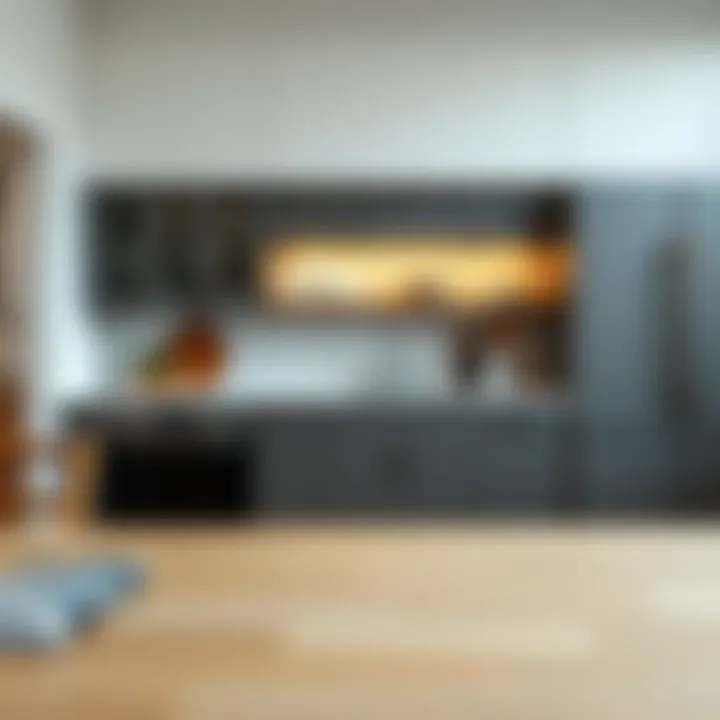
In many cases, choosing a thicker vinyl type can mitigate some durability issues. However, this doesn't eliminate the need for caution in how it’s utilized and maintained.
Proper Surface Preparation
Proper surface preparation plays a pivotal role in how well the contact paper adheres and ultimately performs over time. Without a clean and even surface, the adhesive can fail, leading to bubbles or even complete detachment. This aspect cannot be understated, as a little foresight can save considerable effort down the line.
Cleaning Techniques
Cleaning techniques should focus on ensuring the surface is free from grease, dust, and grime. A soapy solution followed by a thorough rinse and dry is a go-to method that has stood the test of many DIY adventures. This approach works wonders to create an ideal base for adhesive to stick. Furthermore, using isopropyl alcohol can tackle remnants of oils or residue that soap may leave behind.
It’s not just about making things look good; effective cleaning leads to a better bond and longer-lasting results, which should be a priority when applying contact paper.
Surface Irregularities
Surface irregularities, like dents or scratches, can pose a real problem when applying contact paper. Such imperfections might prevent the paper from adhering properly, leading to bubbles or lifting at the edges. One effective workaround is applying a primer to smooth out the surface. It's worth noting that not all irregularities can be effectively smoothed out. This means that choosing a patterned or textured contact paper could help mask minor issues, but a flat design would highlight those flaws.
In summary, addressing challenges in using contact paper involves careful consideration of its durability and thorough preparation of the surface. By understanding both aspects, readers can better navigate their DIY projects and create metal cabinets that not only look good but stand the test of time.
"A stitch in time saves nine" is certainly applicable here; investing time upfront in cleaning and assessing the surface will go far in ensuring a smooth, successful application.
Step-by-Step Application Process
When it comes to putting contact paper on metal cabinets, having a structured application process is crucial. This not only ensures a neat finish but also extends the lifespan of your project. Following a systematic method can mitigate a lot of common issues that arise during installation, such as bubbles, wrinkles, and misalignment. A thorough approach provides you the confidence to create a beautiful and functional update to your cabinets.
Gathering Necessary Materials
Before diving into the nitty-gritty, it’s essential to gather all necessary materials. A well-prepared workspace can make your job a whole lot easier and boost your efficiency.
Here are the materials you’ll need:
- Contact Paper: Choose a vinyl or specialty finish that suits your style.
- Measuring Tape: For accurate measurements of your cabinet surfaces.
- Utility Knife or Scissors: Sharp blades are necessary for clean cuts.
- Squeegee or Credit Card: To smooth out air bubbles while applying.
- Ruler or Straight Edge: To guide your cuts and ensure clean lines.
- Cleaning Supplies: Wipe down surfaces with a degreaser to remove grease and dirt.
Measuring and Cutting to Size
Once you have everything laid out, the next step is measuring and cutting your contact paper. This phase requires precision as uneven cuts can lead to a sloppy appearance.
Steps to Follow:
- Measure the Cabinet Surface: Use your measuring tape for accuracy. Record the height and width of each section you plan to cover.
- Add Extra for Margins: It’s better to overestimate and have a little extra than to end up short.
- Cut the Contact Paper: Use your utility knife or scissors for clean cuts. Always cut on a protective surface to avoid damage beneath.
Applying Contact Paper Smoothly
When you finally get to the application stage, the key is to stay patient and work slowly for the best results. A smooth application is essential to achieving that professional finish.
Techniques for Bubbles
The most frustrating part of applying contact paper can be dealing with bubbles. Luckily, there are some easy techniques to manage them. As you apply the contact paper, use a squeegee or even an old credit card to push out air pockets. Start from the center of the surface and move outward. This way, you can effectively push the air towards the edges, where it can escape easily.
Highlight the stickiness of the contact paper and its ability to 'adhere' to the surfaces once you press out the bubbles. Remember, it’s much easier to deal with bubbles while applying rather than trying to fix them later.
Trim for Precision
After smoothing out the contact paper, you might notice excess material along the edges. This is where trimming comes into play. A sharp utility knife and ruler do wonders here. Carefully place the ruler alongside the edge of the cabinet and glide your knife along the edge to get a straight cut.
Using this method gives you a clean, professional-looking edge, enhancing the overall appearance of your cabinets. Remember, precision in this step speaks volumes about your attention to detail.
"An untrimmed edge can ruin an otherwise perfect installation, so don’t rush this part!"
Maintaining Contact Paper on Metal Cabinets
As with any decorative element in home decor, maintaining contact paper on metal cabinets is essential to ensure that it serves its purpose effectively while also keeping the aesthetics intact. When applied correctly and cared for properly, contact paper not only enhances the visual appeal of metal cabinets but also protects them from scratches and other minor damages. This section digs deep into how to take care of the contact paper, so it stays vibrant and showcases the intended design.
Cleaning Recommendations
To keep your contact paper looking its best, regular cleaning is vital. However, it’s important to approach this task with care to avoid damaging the surface. Here are some practical cleaning tips:
- Use a Soft Cloth: It’s best to use a soft, lint-free cloth dampened with warm water. Avoid abrasive materials that can scratch or tear the contact paper.
- Mild Detergent: If the contact paper requires a bit more than just a water wash, mix a few drops of mild detergent with water. This should help in eliminating any sticky residues without causing harm.
- Avoid Harsh Chemicals: Stay clear of strong solvents or bleach-based cleaners, as these can degrade the adhesive and finish of the contact paper.
- Spot Test: Before fully cleaning a section, do a spot test in an inconspicuous area to check if any chemical affects it negatively. This could save you headache later.
By keeping these tips in mind, you can maintain the cleanliness and sheen of the contact paper, ensuring that it retains its whimsy far longer.
Avoiding Common Damage
Contact paper is generally Durable, but certain practices can shorten its lifespan. Here are some techniques to prevent common issues:
- Temperature Control: Metal surfaces can heat up quickly, and excessive heat can cause the adhesive to loosen. Try to keep the areas where contact paper is applied away from direct heat sources like stoves or heaters.
- Avoid Scraping: If you need to open drawers or cabinets, be cautious not to scrape the edges with tools or other items, as this can lead to peeling or tearing.
- Use Coasters and Mats: For surfaces where items will be placed, consider using coasters or mats to protect the contact paper from scratches and stains that might be caused by heavy objects.
- Moisture Watch: Metal cabinets can be susceptible to moisture. Ensure to dry spills promptly, as prolonged wetness can lead to bubbling or peeling of the contact paper.
Taking an approach of gentle care can go a long way in extending the life of your contact paper. Consistent maintenance and attentiveness to superficial details will surely keep those metal cabinets looking fresh and stylish for years to come.
Design Ideas and Inspiration
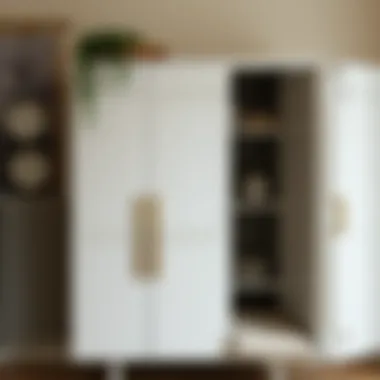
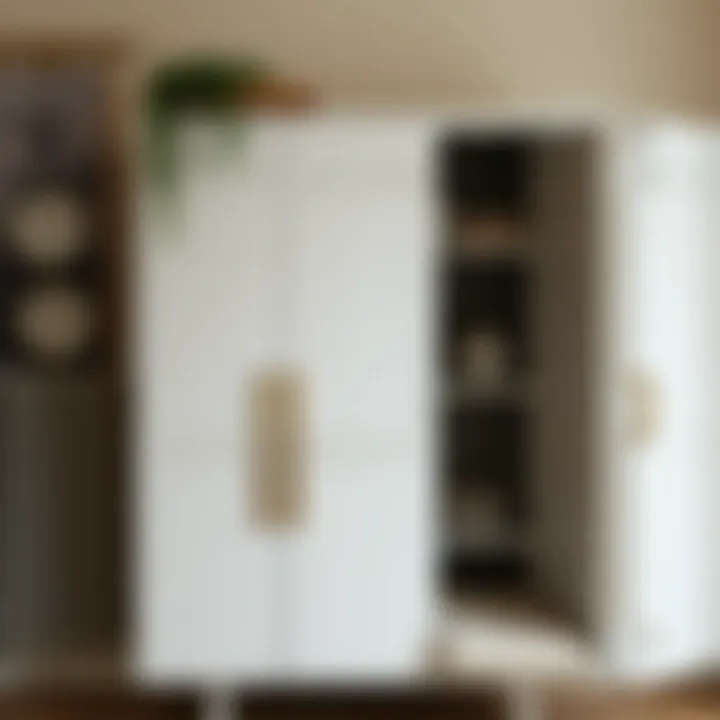
The use of contact paper on metal cabinets isn't just about practicality; it's also a unique avenue for personal expression in home design. With a plethora of design options at hand, incorporating contact paper can breathe new life into otherwise mundane spaces. By carefully selecting color schemes, patterns, and motifs, homeowners can create an aesthetic that aligns with their preferences and suits their living environments. Beyond mere aesthetics, these design choices can also enhance the functional aspects of the cabinets.
Color Schemes
When considering color schemes, it's crucial to think about the overall ambiance one desires to create. Different colors can evoke different emotions and settings. For instance, soft pastels can lend a calm and airy feeling to kitchens, while bold jewel tones can invigorate a living space.
Moreover, color schemes work hand in hand with the existing decor to create cohesion. A well-chosen palette can unify a room's appearance, making it feel more harmonious. It's advisable to stare at the colors throughout the day, as changing light conditions can drastically alter their appearance. The temperature of a color—whether it's cool or warm—can also influence perceptions of space, making it feel larger or more cozy.
Key points to ponder:
- Warm colors like red or orange can stimulate appetite, often favored in dining areas.
- Cooler hues like blue or green can have a soothing effect, making them ideal for relaxation spaces.
- Always keep in mind the balance of light; darker colors can create an intimate atmosphere but may also make spaces feel smaller.
Patterns and Motifs
Patterns and motifs offer rich options for design refinement, giving cabinets character that stands out. Let’s explore two popular choices: geometric patterns and floral designs.
Geometric Patterns
Geometric patterns are all the rage these days, and for good reason. Their clean lines and angles can add a modern flair to any metal cabinet. These designs offer structured aesthetics, often evoking a sense of order and sophistication.
When used effectively, geometric patterns can serve as a focal point without overpowering the space. A chevron pattern, for example, while bold, can create movement in a design, drawing the eye across a surface without being chaotic.
A unique feature of geometric designs is their versatility. They can be scaled to suit a variety of spaces, from large cabinets to much smaller fixtures. Furthermore, they pair well with a wide range of colors, making it easier to coordinate with other décor elements.
Advantages of using geometric patterns include:
- They provide a modern touch that appeals to a contemporary audience.
- Their clean lines make them easy to align during application, leading to a professional finish.
Disadvantages may include:
- Some patterns can be overwhelming if not balanced with solid colors or understated elements.
- They sometimes require precise measuring and cutting for an effective fit.
Floral Designs
On the other side, floral designs evoke a sense of natural beauty and warmth. These motifs can introduce a lively, inviting atmosphere to metal cabinets, making them ideal for kitchens or living areas. Floral patterns can range from intricate and delicate to bold and dramatic, allowing for a drastic change in the overall feel of a space.
The key characteristic of floral designs lies in their ability to soften the harshness often associated with metal surfaces. The organic shapes and colors can create a beautiful contrast against the rigid edges of metal furniture. Plus, they tend to bring in nature, which can be uplifting in an urban environment.
Unique features of floral patterns include:
- Their ability to blend seamlessly with other décor styles, such as rustic, modern, or shabby chic.
- The endless variety available, ensuring that every homeowner can find something that speaks to their personal style.
However, one must be cautious about:
- The potential for these patterns to look dated or overly busy, depending on their execution and surrounding decor.
- Like geometric designs, precise measurements and thoughtful placement are crucial to ensure they complement rather than clash with other design elements.
Ultimately, the right design choices through color and pattern can significantly enhance not just the look of metal cabinets but also the overall feel of a space. With thoughtful selection, contact paper transforms from a mere covering material into a design statement that resonates with personal style.
Comparing Contact Paper to Other Options
When it comes to sprucing up your metal cabinets, the choice of finishing materials is vast. Comparing contact paper to other solutions helps home owners and decorators alike make informed decisions. Understanding the pros and cons of each option can lead to a more satisfying end result in both appearance and functionality.
Paint vs. Contact Paper
Choosing between paint and contact paper often boils down to specific needs and desired outcomes. Paint has its merits, like a wide array of colors and finishes–especially if you lean towards a high-gloss lacquer or a matte finish for a sleek appearance. However, painting metal cabinets can be a cumbersome task requiring thorough surface preparation, potentially even sanding down the surface to avoid peeling or bubbling down the road. Moreover, paint needs time to cure, which can delay your project significantly.
On the flip side, contact paper offers a swift solution. Simply peel, stick, and you’re done! It’s less time-consuming and allows for quick changes in your decor. Should you tire of your current aesthetic, swapping out contact paper is a breeze. Moreover, with various patterns available, like that trendy marble look or vintage florals, you can easily match your contact paper to any theme.
However, it’s crucial to consider durability. Paint tends to be more resistant to scratches and stains, while contact paper may require more care, resulting in some homeowners preferring the former in high-traffic areas. Yet, if you’re looking for a temporary fix or an easy transformation, contact paper is patent way to go.
Vinyl Wraps and Their Benefits
Now, looking at vinyl wraps, they seem to wade into the same waters as contact paper but stand apart with certain distinguishing features. Vinyl wraps are often thicker and specifically designed for durability against wear and tear. They tend to adhere better on uneven surfaces compared to contact paper. If you’re sporting cabinets with a lot of nooks and crannies, a vinyl wrap might be more forgiving.
Here are some notable perks of vinyl wraps:
- Resistance to Fading: Unlike contact paper, vinyl wraps can often withstand the sun's rays without losing their vibrant colors.
- Waterproof Options: Some vinyl wraps can resist moisture, making them suitable for environments like kitchens and bathrooms where splashes are frequent.
- Easier Application on Metal: Depending on the type of vinyl wrap, applying them can sometimes cover a multitude of surface imperfections better than contact paper.
But keep in mind that vinyl wraps can come with a heftier price tag. They’re typically more expensive than contact paper. For homeowners on a budget, the cost might be a deal breaker.
"Whatever option you choose, considering your space’s unique needs, will guide you in making the right decision.”
Ultimately, the choice between paint, contact paper, and vinyl wraps hinges on your personal design vision, the specific environment, and how much wear and tear you expect the surface to endure. Researching your options, possibly mixing materials, might give your metal cabinets that touch of charm they’ve been missing.
The End
In wrapping up this guide, it's essential to reflect on the multifunctional benefits of applying contact paper to metal cabinets. Throughout our exploration, we've seen how a simple roll of adhesive can transform the mundane into something visually appealing and highly functional, marrying aesthetics with utility. As a homeowner or designer, understanding the various options available and the techniques for proper application empowers you to enhance your space creatively and economically.
Summary of Key Points
- Versatility: Contact paper comes in a variety of colors, textures, and patterns, ensuring you can match it with any decor style. Whether you’re looking for a rustic woodgrain finish or a sleek metallic look, there's something for everyone.
- Cost-Effectiveness: Compared to paint or professional refinishing, contact paper offers a budget-friendly approach that doesn’t skimp on style. With the right prep, it can yield results that rival more expensive options.
- Ease of Application: The step-by-step application process is straightforward. Many can handle the installation alone, making it a practical DIY project for those looking to refresh their cabinets without the need for special tools or skills.
- Maintenance: Proper care of contact paper ensures longevity. Regular cleaning using gentle methods can keep your cabinets looking fresh and intact.
- Creative Possibilities: With the ability to personalize your cabinets, contact paper allows for an unprecedented level of customization that can reflect personal style or seasonal shifts in decor.
Final Thoughts on Contact Paper Use
Just remember, the key elements to success are preparation and selection. The right choice of contact paper, matched with thoughtful application, can truly breathe new life into old or outdated metal cabinets. So whether you are dabbling in a weekend project or initiating a more extensive redesign, contact paper offers an innovative solution with endless possibilities.
"The greatest part of art is that it is not about perfection, but about expression. Let your metal cabinets speak your style with the right contact paper."
By integrating these insights, anyone can use contact paper to create a visually appealing environment while maintaining practical functionality. It's an accessible way to elevate your home or workspace, encouraging creativity and personal expression along the way.



